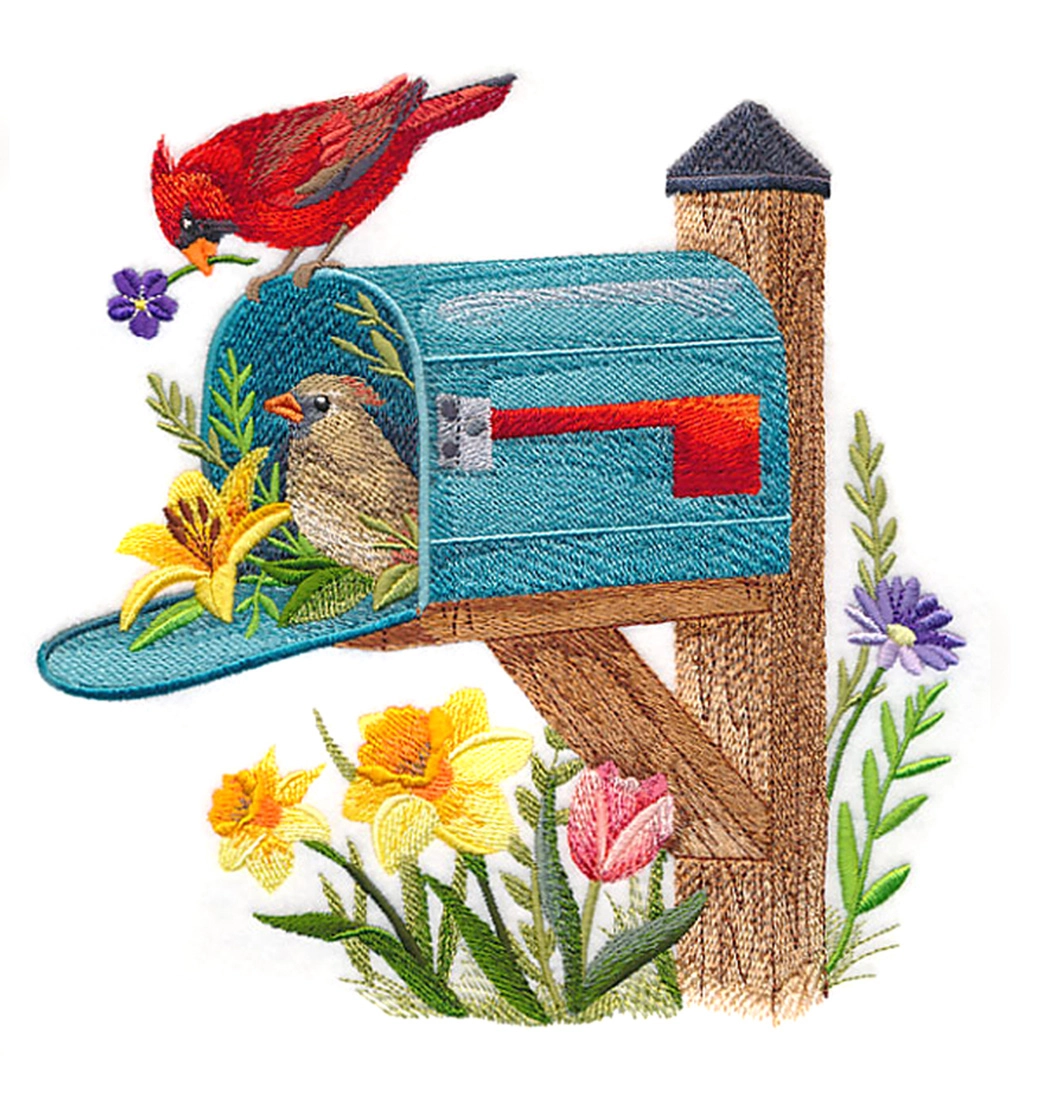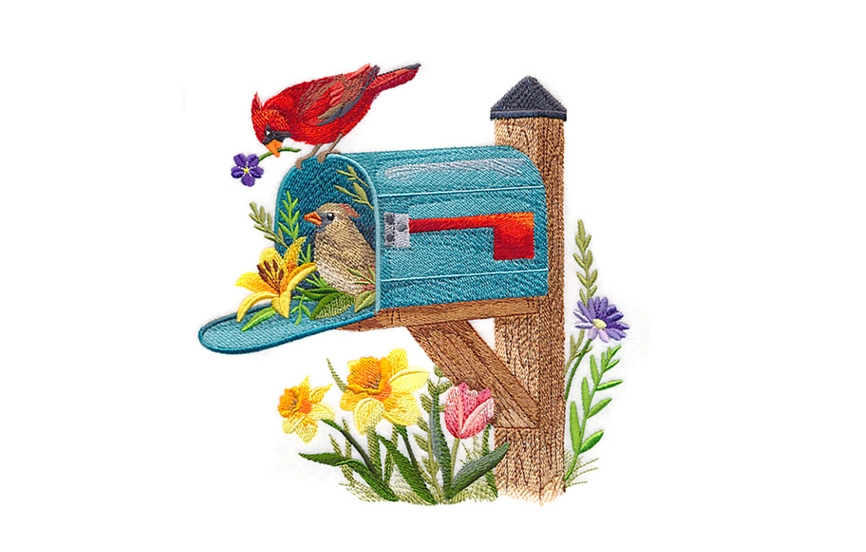Keep the bright, hot sun off your face and neck with summery embroidered straw hats. This tutorial explores the best types of stabilizer, designs, and techniques for embroidering on a variety of straw hats to help you get excellent results every time.
Project Needs & Notes
- Straw or synthetic straw hat
- Tear-away or water-soluble stabilizer
- Temporary spray adhesive (Gunold KK100)
- Air-erase pen for marking
- Organza and permanent spray glue (if using alternate application method)
The straw hats used in this tutorial were found at Target, Lowe's, Wet Seal, and Michaels, as well as Amazon.com. These hats fell into two categories: natural fiber straw, and synthetic straw made of paper or a paper-polyester blend.
Some synthetic straw hats have a flexible core running around the brim. That core is used to sculpt and shape the edge of the hat. If working with a hat like that, be aware that the needle can't penetrate the core, so steer clear of that area while stitching.
Designs featured in the tutorial below include:
- A8395, Hibiscus Circle (Redwork)
- D7124, Damask English Rose Corner
- Y3448, Cozy Country Flower (Crafty Cut Applique)
- D5178, Dashing Damask Flower
- G4178, Acappella Border 2.
This project was featured in the following:
Garden Party Lookbook
Designs Used
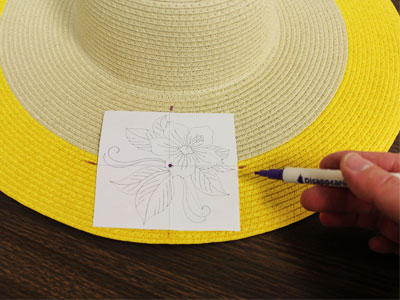
A template, or printout of a design, is an excellent tool to help with placement.
Print a template of the design from your embroidery software. If you do not have embroidery software, Wilcom's TrueSizer is a free program to use.
Arrange the template on the brim. Here the template is placed so the center point is centered between the edge of the brim and the crown of the hat.
Mark the center point, as well as the vertical and horizontal axis lines.
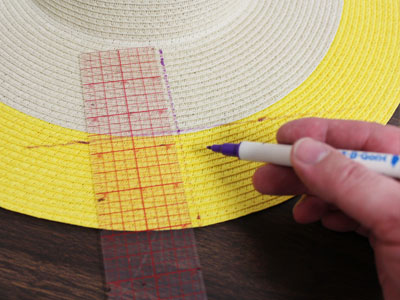
Remove the paper template and draw lines connecting the marks.
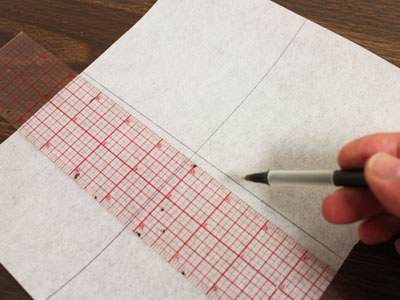
Straw and synthetic straw is fairly sturdy, and this design is simple, so I'll use tear-away stabilizer for my first test.
Use your largest hoop when embroidering on hats, as that will give a larger surface to lay the hat flatter.
Cut tear-away stabilizer a few inches larger than your largest hoop. Draw horizontal and vertical axis lines on the stabilizer.
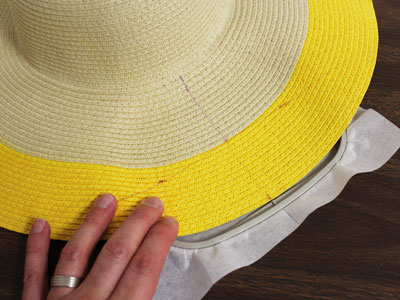
Hoop the stabilizer, lining up the marks on the stabilizer with the marks on the hoop.
Spray the stabilizer with temporary adhesive. Place the hat on top, lining up the marks on the hat with the marks on the stabilizer and the hoop.
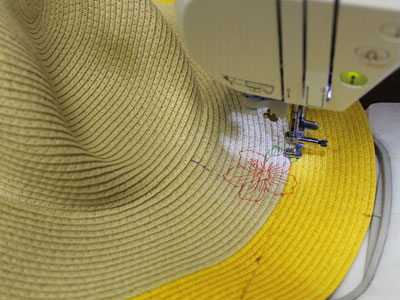
The crown of the hat needs to be flattened before embroidering, to avoid bumping into the machine.
Press the crown down and inward to ensure that the hoop has ample room to move.
Load the design to the machine, and move the hoop so the needle is right over the center point.
Embroider the design.
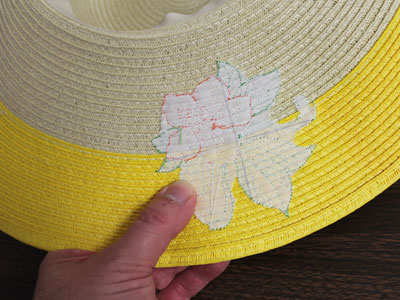
After embroidering, tear the excess stabilizer away from the back, and trim any loose stitches.
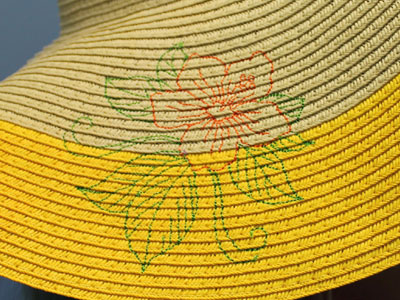
Here is a close-up view. The design is light, with running stitches, and you can see that the ridges in the straw cause the stitches to jag back and forth a bit.
I tried to minimize this by using a water-soluble stabilizer as a topping, but there was no noticeable difference in the results.
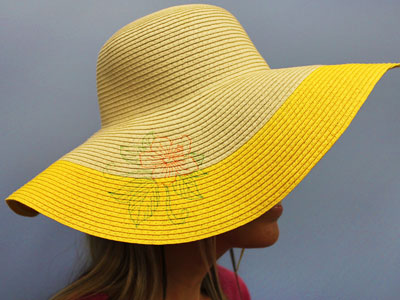
Although the unevenness in the stitching is visible at a close-up view, it isn't visible from even a short distance away.
Light embroidery designs are a subtle addition to straw hats, and work reasonably well on the straw texture.
Next, I'll demonstrate with a heavier design for a bolder look.
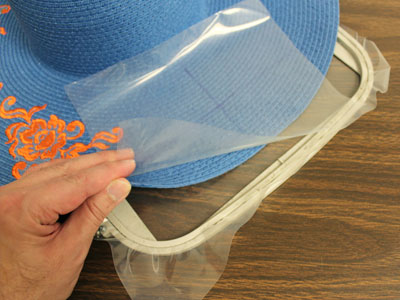
In an effort to make the underside of the brim look neater and cleaner, I tried water-soluble stabilizer.
In this example, I used Sulky Ultra Solvy (a heavy weight water-soluble stabilizer), and the D7125, Damask English Rose Corner.
I followed the same steps as before, but hooped Sulky Ultra Solvy instead of tear-away stabilizer. And, I added a piece of water-soluble stabilizer to the top, too.
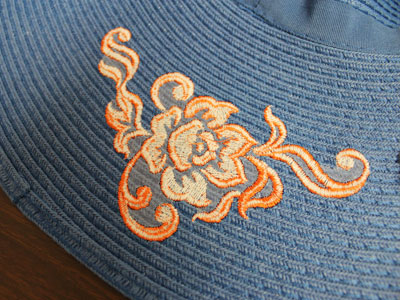
When using a water-soluble stabilizer on hats, don't soak the hat to remove the stabilizer. Instead, tear as much of it away as you can (use a tweezers or tip of scissors for the small areas), and then blot the rest away with a damp Q-tip or paper towel.
Keep in mind that synthetic straw hats are cheaply made. The dyes in the polyester-paper blend are likely to bleed when wet.
I found that the water-soluble stabilizer was a sufficient backing and topping, too.
Used as a topping, the water-soluble stabilizer helps to smooth out designs with satin stitches, too. While it made no noticeable difference in the running stitch design, it did improve results with the satin stitches in this design.
Because these fashionable hats have big and floppy brims, the back side of the design will show. If you wish, you can wind a bobbin with the same thread that you're using in the top. That way the underside of the brim won't show the white bobbin stitching that you see in this photo.
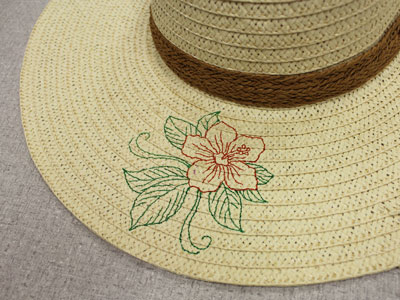
The above examples demonstrate with synthetic straw. I found natural fiber hats at Wet Seal. These hats have a softer and smaller weave than the synthetic straw hats that I found.
I used the same technique with either water-soluble stabilizer or tear-away stabilizer on the back, and the results were great.
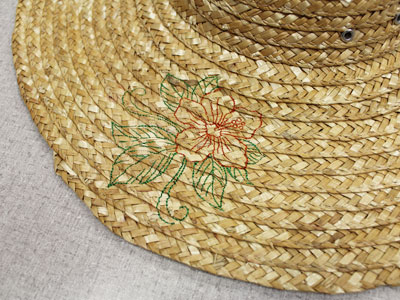
his is a natural fiber hat that I found at Michaels in the floral arranging section.
This hat has a heavier weave, and you'll note that the multi-colored straw creates a variegated effect.
While the technique of using water-soluble stabilizer as a backing is the same, choose the designs carefully. You can see that the A8395, Hibiscus Circle (Redwork) design gets lost in the variegated straw.
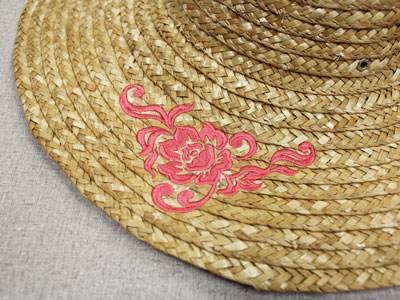
However, a heavier design with satin stitches shows up very well against the multi-colored straw.
The design shown here is the D7124, Damask English Rose Corner.

Next I tried an applique design:
Y3448, Cozy Country Flower (Crafty Cut Applique).
It worked very well. This type of applique design is light and airy, and a great choice for heavy-weave hats, as there are only a few simple stitches that sew directly onto the hat.
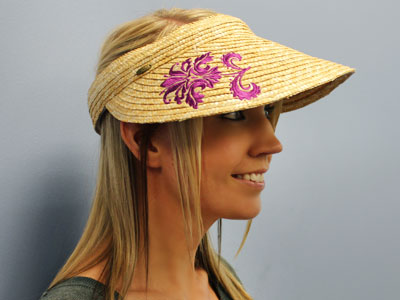
I ordered a natural fiber straw visor from Amazon and used the same technique as with the hats (water-soluble stabilizer on the top, and as backing). The design featured is D5178, Dashing Damask Flower.
There's no crown, so I didn't need to flatten it. But I did tape vertical brim down to flatten it more. This is an optional step.
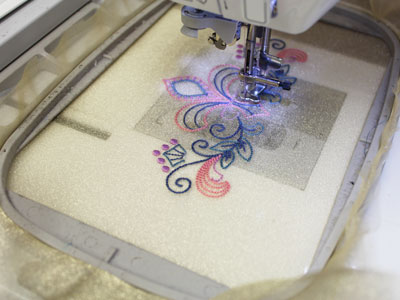
As well as embroidering directly onto a hat, you can also stitch onto organza, then glue that to the hat.
Use polyester organza that is about the same shade as the hat.
Hoop the organza with a piece of water-soluble stabilizer. Embroider the design. This example uses G4178, Acappella Border 2.
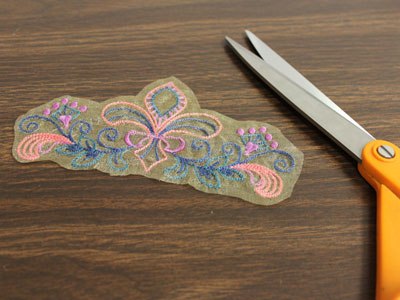
After embroidering, cut as much of the stabilizer away. Trim around the shape. Remove the remaining stabilizer by soaking in water.
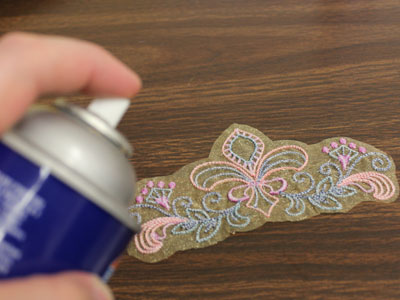
Press with an iron on a low setting, and use a pressing cloth.
Use an all-purpose permanent adhesive, like Elmer's Craft Bond Multi-Purpose Spray. Spray it on the back of the embroidery.
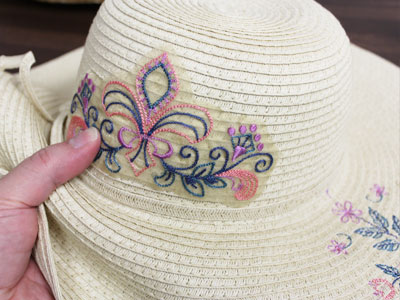
Press it in place.
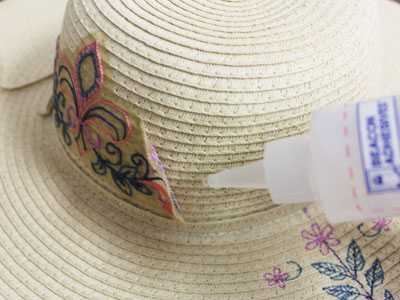
Use fabric glue, like Beacon Adhesives Fabri-Tac, to reinforce the edges.

With just a bit of embroidery, your straw hat will be oh-so-fashionable, and functional, too.

